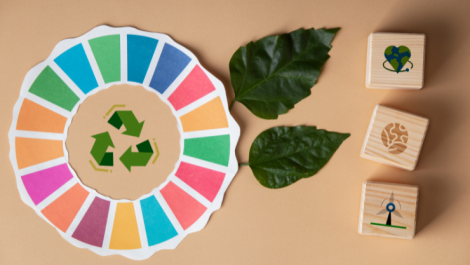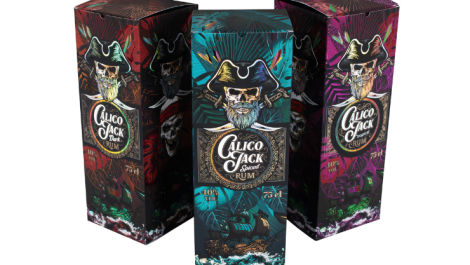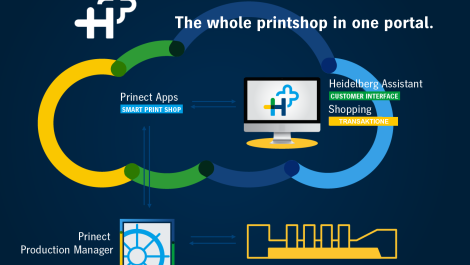This old Light Brigade Grenadier printer has been fitted with the Revive upgrade kit
In the past year Colorific has shipped some 75 of its Lightbar conversions that let wide format printers run new solvent-UV ink. Simon Eccles examines how it works.
Just about a year has passed since Colorific launched its Lightbar conversion system for a range of large format solvent inkjets. This lets them run a hybrid solvent-UV ink called UV Light, designed to help users cut running costs and broaden their scope of printing. The conversion has been a sales success, with some 75 sold as either conversions or new builds.
This year the company has moved into new premises in Marlow and in the run up to Sign & Digital UK it has been taking the fight to its much larger competitor, HP. In what looks like a David v Goliath rerun, Colorific’s managing director Nick Wintle has run an ad and email campaign that claims that in side-by-side use in a German printer, its running costs are about half those of the latest Latex 360.
Big claims indeed, which we will examine further down this story. First, what is this conversion anyway?
Having built up a business supplying what it calls ‘best in class’ replacement wide format printer inks from a variety of manufacturers, Colorific ventured into the conversion process at the start of last year. This conversion takes standard eco-solvent printers from Roland, Mimaki, Mutoh and some old Light Brigade Uniforms, and modifies them to run a solvent-UV hybrid ink it calls UV Light.
The most obvious part is the Lightbar, a new external housing for a UV curing lamp that runs horizontally across the full width of the front of the printer. The light pressure bulb runs at relatively low temperatures and low energy, with no ozone emission and no need for ducting or cooling fans.
The UV Light ink is the really important part. It contains UV-curing photopolymer with a little solvent. As with an all-UV ink, UV Light cures almost instantly on self-adhesive vinyl and other plastic media. The solvent is the carrier for the pigment and also gives the initial bite to the media. Then, as the media passes the UV lamp in the Lightbar, the photopolymer part of the ink has photo initiators which start the curing process. Once the material has passed the Lightbar, this process is complete and the print is completely dry and ready for application.

This UV640Plus is a ready-converted printer, based on the Roland DG RF640 chassis
Unlike a conventional light solvent ink there is no outgassing after curing (which can take place for 24 hours or so), so the print is immediately ready for overlaminating and other finishing processes. Colours available are CMYK plus light cyan and light magenta. Users report that the print speeds are the same as with standard solvent.
The solvent thins the ink, so you get a very smooth finish without the surface roughness or raised effect associated with conventional UV. As with conventional solvent ink, it also softens and partly dissolves the top surface of plastic media such as vinyl, to form a strong bond for the pigment.
Colorific can supply brand new 54 or 64 inch Roland printers (and printer-cutters) with the conversion ready fitted, or it can convert existing printers at the customer site.
For around £2500 you can revitalise an old printer with the ‘Revive’ kit. This is fitted on-site by Colorific’s engineers over a two day period. In principle it can be used with any 54 or 64 inch (1370 or 1625 mm) width solvent or eco solvent printer that is fitted with Epson DX4, 5, 6 or 7 print heads. At first the conversions were mainly Roland DG models plus some of the old Light Brigade Uniform models, but over the past year this has broadened out to include some of the Mimaki and Mutoh solvent printers which use the Epson heads.
It is a two-day process that involves fitting the Lightbar to the printer and replacing clear ink feed lines with UV-proof opaque ones, then training the operator and setting up profiles for the most used media stocks.
Spreading ink further
UV Light costs a little more than the original solvent (it is £79 per 440 ml cartridge), but less of it is needed for the same area of coverage. ‘With traditional eco solvent ink the solvent part evaporates away, leaving the pigment on the material,’ said Mr Wintle. ‘With UV Light inks there is far less solvent, so less evaporation and therefore less ink is required to print. Additionally, as the colour gamut of the ink is wider we need less ink to create particular colours, thus enabling us to reduce the ink limits on the material. The result is that the product is far more economical in terms of ink usage compared to its traditional counterparts. We see ink savings of up to 30% per square metre.
‘Customers can also reduce their laminating by about 50%. If they are printing stickers and decals, instead of laminating they can now just print on a heavier vinyl, for application purposes rather than durability.’
The ink works with much the same media as customers would normally use with eco solvents. The ink is fairly stretchable, but the UV component only stretches so far, so it is probably not suited for deep recesses and grooves if used for vehicle wrapping. On the other hand, Mr Wintle said that it will work with things that were not anticipated, such as soft signage. ‘We’ll probably be launching a specific wallpaper application towards the summer,’ he added. ‘We have 22 wallpaper products that we’ll be testing straight after Sign & Digital.’
SUV competitors
Colorific announced its ink and conversion process at the end of 2013. Around the same time, Mimaki announced its JV400-SUV with SV100 CMYK solvent-UV inks, which shipped at the beginning of 2014. This adopts the same approach of a UV lamp downstream of the heated bed where the solvent etching and evaporation takes place.

The UV Light inks are supplied in cartridges to fit the target printers, at £79 for 440 ml
There are strong indications that it is pretty well the same ink as Colorific uses, with both being manufactured by Fujifilm Speciality Inks in Broadstairs. None of the parties will quite confirm or deny this, but assuming it is true then the inks will be apparently slightly different to suit the different manufacturers’ needs. In particular UV Light is intended for Epson print heads while Mimaki adopted Ricoh heads with its JV400.
What is not disputed is that the Fujifilm Vybrant F1600 printer, which first shipped last summer, is a rebadged 1.6 metre Mimaki JV400-SUV running an ink that Fuji calls Uvijet VN.
The JV400 is a CMYK printer with a maximum resolution of 900 x 1200 dpi, running at up to 14.2 square metres per hour (production speed) or 18 square metres in high speed mode. Mimaki offers a choice of 1.3 metre or 1.6 metre widths for about £17,995 and £19,995 respectively. Ink is supplied in 600 ml sacks for each colour, priced at £125 each.
The Vybrant F1600 has the same specification, though there is no 1.3 metre model. Its list price of around £15,499 undercuts Mimaki’s though, and it charges £102 for a 600 ml ink sack.
The Latex argument
Latex ink has been a real success story for HP since it was introduced in 2008. Printers worldwide have been choosing it for its powerful combination of the ecological benefits of a completely solvent-free ink, with instant drying, a smooth finish and acceptably bright colours. There is no outgassing so the prints can be laminated immediately, and there is no solvent smell so prints can be used indoors. It is also suitable for the same outdoor applications as eco solvents, with much the same lifetime.
The inks are aqueous based, but containing resin copolymers that are heat activated and bond to the surface of the media as the water is driven off by heat. A lot of heat was needed by early models.
Early Latex printers were very large format, high throughput but pricey printers, but the company has been steadily extending its range. Last summer it introduced the 1.3 and 1.6 metre Latex 300 series, with prices starting at £10,500. A new, more scratch-resistant, ink formulation, combined with an ‘optimising fluid’ primer applied by the print heads, brought down ink usage and the curing temperatures. These machines use CMYK plus light cyan and light magenta inks, at about £107 per 775 ml cartridge.
David v Goliath
In recent weeks, Colorific launched a promotional campaign that compares its system’s running costs against one of the latest Latex printers. Mr Wintle says that the trials were carried out in a customer site in Germany, which has a Latex 360 (the top 1.6 metre model with built-in spectrophotometer and textile mesh gutter, costing about £17,600) and a UV640Plus (based on a Roland RF640 and costing £12,495 as a new build). Not counting the initial purchase cost, the user compared ink costs, head replacements and power usage. Based on an average of five hours per day running five days per week, it calculated annual costs as £23,862 for the Colorific and £35,782 for the HP.
We stress that these are Colorific’s claims and Digital Printer has not been able to do its own independent hands-on testing or costing. Note that the ecological argument of Latex is strong (apart from the heavy power use) and the ink can be used on a very wide range of media, including paper, plastics, wall coverings, textiles and pretty well anything else you can feed it with. It is safe for use with garments and it does not prevent recycling of suitable media. On the other hand, SUV inks do contain some solvents and the UV component may prevent recycling.





